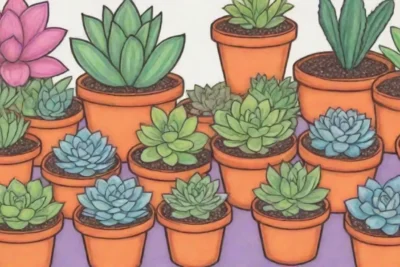
Finding the Right Succulent Group: What to Look For

Introduction
Succulents have become incredibly popular in gardening, decor, and even as office plants due to their aesthetic appeal, low maintenance needs, and unique shapes and colors. As a form of drought-resistant plants, they have a unique charm, drawing many to explore the world of succulent gardening. With so many different varieties available, choosing the right group of succulents that will thrive together can be a daunting task. An ideal group not only creates a visually stunning display but also ensures that every plant can flourish in a shared environment.
This article aims to guide you through the essentials of finding the right succulent group based on various factors such as light requirements, water needs, and growth habits. By the end of this article, you will be well-equipped to choose the best combinations of succulents that will enhance not only your garden but your living space as well.
Understanding Succulent Characteristics
Succulents are a diverse family of plants, encompassing thousands of species that each have unique traits. The first step in finding the right group of succulents is understanding their characteristics. Most succulents share a common feature: they store water in their leaves, stems, and roots, which is why they have a thick, fleshy, and often waxy appearance. However, they can vary widely in terms of color, size, and growth habits.
Growth Forms and Shapes
When selecting a succulent group, consider the different growth forms prevalent in succulents, which range from rosette shapes, such as those seen in Echeveria, to columnar types like Cereus. This diversity not only contributes to aesthetic variety but also offers unique spatial considerations in your planting design. For instance, low-growing succulents such as Sedum can serve as ground covers, while taller varieties like Aloe can create visual interest and height variation.
Watering Needs
Understanding the watering requirements of succulents is critical for maintaining plant health. Most succulents prefer to dry out between watering, but some varieties have higher moisture needs than others. For example, Haworthia and Aloe can tolerate slightly more moisture compared to plants like Agave, which prefer to stay as dry as possible. Be sure to group plants with similar watering needs together to avoid complications like overwatering that could lead to root rot.
Sunlight Tolerance
Sunlight is another essential factor to consider. Succulents thrive in bright, indirect sunlight but can vary in their tolerance to direct sun. While some varieties, such as Jade Plant (Crassula ovata), can handle intense afternoon sun, others may suffer from sunburn if exposed for too long, necessitating careful placement. When selecting a group, evaluate the sunlight conditions of your planting area to ensure that all members can meet their light requirements without stress.
The Role of Companionship in Succulent Care
Choosing succulents that not only complement each other visually but also thrive together requires an understanding of the concept of companionship. Just as certain plants can enhance each other’s growth, some succulents can create a supportive environment.
 Spotlight on Popular Succulent Clubs Across the Country
Spotlight on Popular Succulent Clubs Across the CountryComplementary Colors and Textures
One way to achieve an appealing succulent arrangement is through the consideration of color and texture. Grouping plants that offer dramatic contrasts or that work in a monochromatic scheme can showcase their unique attributes. For example, the bright green hue of Echeveria agavoides shifts beautifully next to the soft purple tones of Graptopetalum paraguayense. Pairing a mix of textures, such as the spiky leaves of Euphorbia with the smooth leaves of Sedum, can create an engaging visual dynamic that captures the eye.
Environmental Symbiosis
Beyond aesthetics, consider how different succulents can interact with one another in their environment. Some succulents can draw specific nutrients from the soil, which may benefit neighboring plants. For instance, Aeonium can help shade the soil, preventing evaporation, while Cotyledon can benefit from the cooler temperatures created beneath larger succulents. Understanding these relationships can lead to healthier plants and a more vibrant garden display.
Seasonal Growth Patterns
It’s also essential to keep in mind the seasonal growth patterns of different succulents, as many grow actively only during specific times of the year. Some varieties may go dormant during hotter months, while others thrive in spring or fall. Choosing a mix of those exhibiting different growth cycles can ensure year-round visual interest while adapting to seasonal changes in your climate.
Practical Tips for Grouping Succulents

Once you’ve considered the various factors involved in selecting your succulent group, it’s time to put these ideas into practice. Here are some practical tips to help you create the perfect succulent arrangement.
Container Selection
The container you choose can greatly influence the success of your succulent group. Opt for pots that allow for good drainage, as standing water can lead to root rot. Terracotta pots are often preferred for their breathability, while modern ceramic containers can also work if they provide adequate drainage holes. When to choose larger containers versus smaller ones often depends on how you want to achieve the look of your display, but groupings in larger pots can mimic a natural landscape more easily.
Soil Considerations
Using the right soil mixture is integral to the health of your succulents. A well-draining potting mix specifically formulated for succulents will help prevent issues as well. You might also consider adding perlite or sand to a standard potting mix to enhance drainage, creating an ideal growing medium. Succulents prefer soil that has a combination of organic matter and minerals to enable vegetation while allowing water to flow through quickly.
 How to Start Your Own Succulent Community Group in Your Area
How to Start Your Own Succulent Community Group in Your AreaRegular Maintenance
Lastly, keeping an eye on your grouping for signs of stress is essential. Monitor for any pest infestations, discoloration, or wilting leaves, as these indicators suggest that environmental adjustments may be required. Regularly check soil moisture to determine watering needs and prune any dead or decaying foliage to promote healthy growth. Understanding each plant's requirements is crucial; with careful observation, your succulent garden will thrive.
Conclusion
Selecting the right succulent group can be an enjoyable yet intricate process involving various factors such as light, water, and companion plant relationships. By gaining a deeper understanding of these characteristics and considering their natural interactions, you can create harmonious arrangements that flourish together.
As you start your succulent journey, remember to appreciate the diversity that each plant can bring to your garden, taking into account not just their visual appeal but also their specific needs. As you gain more experience, you’ll develop an intuition for which plants enjoy the best companionship and will be more adept at customizing arrangements that reflect your unique style and preferences.
Finding the right succulent group adds value to any space, whether it’s a window sill, desk, or outdoor garden. Through a thoughtful approach and experimentation, you’ll have a thriving and stunning collection of succulents that not only captivates the eyes but also enhances your enjoyment of gardening. With the right group of succulents, you’re not just cultivating plants; you’re creating a retreat that showcases the beauty and resilience of nature. Happy gardening!
If you want to read more articles similar to Finding the Right Succulent Group: What to Look For, you can visit the Community groups category.






You Must Read